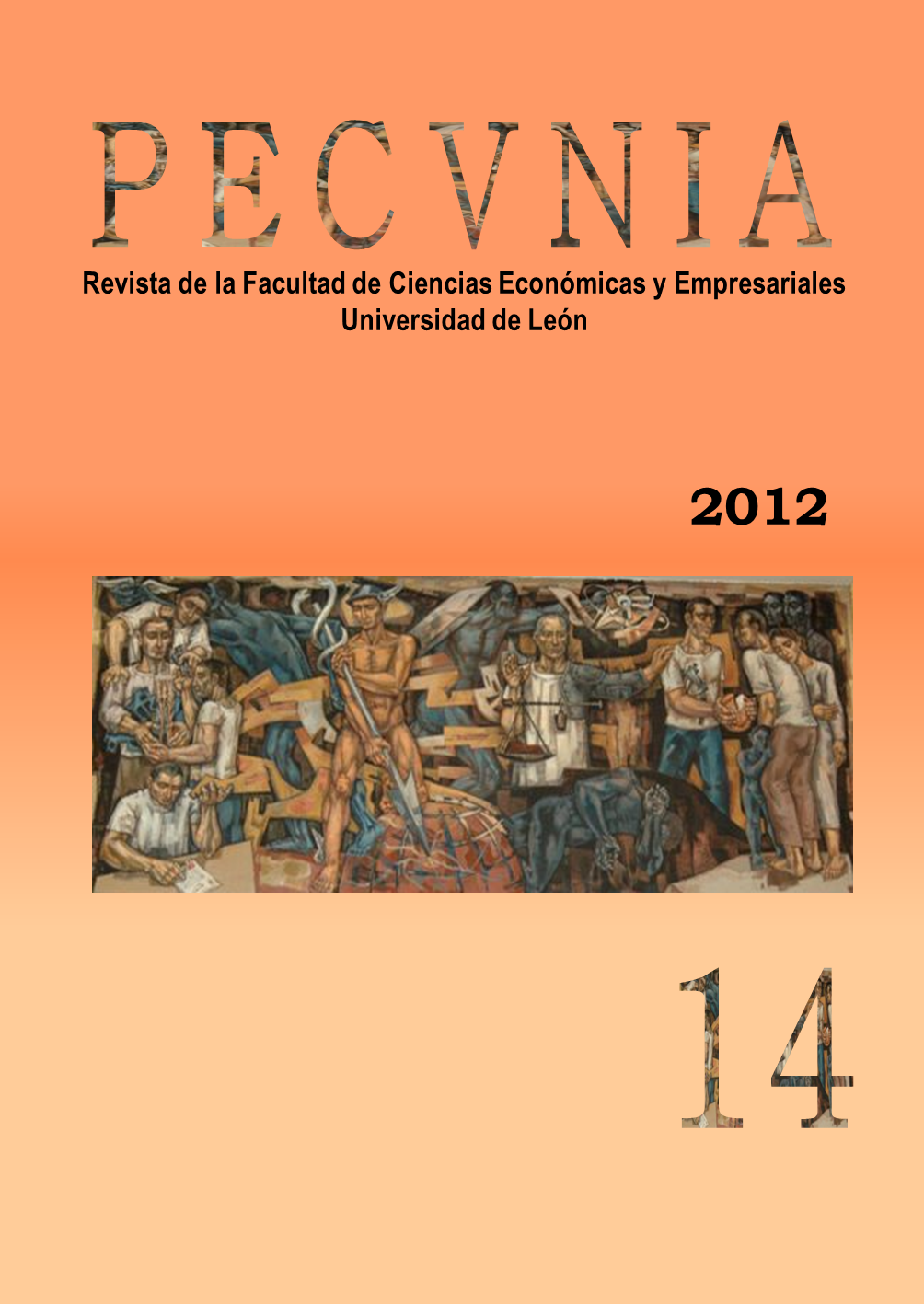El conflicto competitivo entre sistemas socio-técnicos complejos y la evolución de los sectores industriales = The competitive conflict between complex socio-technical systems and industrial sector dynamics
DOI:
https://doi.org/10.18002/pec.v0i14.593Palabras clave:
Segmentación, Diferenciación, Paradigma, Percepción, Cognición, Evolución Segmentation, Differentiation, Paradigm, Perception, Cognition, EvolutionResumen
ResumenLas concepciones tradicionales con respecto a la Estrategia Competitiva y a la dinámica de los sectores industriales han sido casi siempre orientadas hacia el lado de la demanda, el Posicionamiento de las marcas, o hacia el lado de la oferta, la Productividad de los recursos. En este artículo se presenta el concepto de “paradigma vincular” para entender a la Estrategia Competitiva y la Dinámica de los Sectores Industriales. Este concepto liga el posicionamiento con la productividad desde un abordaje cognitivo, interactivo y sistémico.
Abstract
Almost all of the traditional views regarding Competitive Strategy and Industrial Sector Dynamics have been oriented towards the demand side, this is a brand Positioning bias, or towards the supply side, this is a resource Productivity bias. This paper introduces the concept of “vincular paradigm” to understand Competitive Strategy and Industrial Sector Dynamics from a cognitive, interactive and systemic approach
Descargas
Citas
Abell, D.F. y Hammond, J.S. (1979). Strategic market planning: Problems and analytical approaches. Englewood Cliffs, NY: Prentice-Hall.
Alonso, M. (Ed.) (1990). Organization and change in complex systems. New York, NY: ICUS, Paragon House.
Anderson, J.R. (1995). Cognitive psychology and its implications (4a ed.). New York, NY: W.H. Freeman & Co.
Arrow, K.J. (1958). Utilities, attitudes, choice: A review article. Econometrica, 26(1), 1-23.
Balcetis, E. y Dunning, D. (2006). See what you want to see: Motivational influences on visual perception. Journal of Personality and Social Psychology, 91(4), 612-625.
Bandura, A. (1986). Social foundations of thought and action: A social-cognitive theory. Upper Saddle River (NJ): Prentice-Hall.
Bar-Tal, D. (1990). Group beliefs. A conception for analyzing, group structure, processes, and behaviour. New York, NY: Springer-Verlag.
Ceruti, M. (1994). El mito de la omnisciencia y el ojo del observador. En P. Watzlawick y P. Krieg (Comps.), El ojo del observador. Contribuciones al construccionismo. Barcelona: Gedisa.
Chun, H. y Nadiri, M.I. (2002). Decomposing productivity growth in the US. Computer Industry. National Bureau of Economic Research, Working paper nº 9267.
Dienes, Z. y Perner, J. (1999). A theory of implicit and implicit knowledge. Behavioral and Brain Sciences, 22, pp. 735-808.
Dror, I. (2005). Perception is far from perfection: The role of the brain and mind constructing realities. Behavioral and Brain Science, 28(6), 763-763. (doi:10.1017/S0140525X05270139).
Dror, I.E. y Fraser-Mackenzie, P.A.F. (2008). Cognitive biases in human perception, judgement and decision making: Bridging theory and the real world. En K. Rossmo (Ed.), Criminal investigative failures. New York, NY: Taylor & Francis.
Enwistle, N. (1987). A model of the teaching-learning process. En J.T.E. Richardson, M.W. Eysenck y D. Warren-Piper (Eds.), Student learning: research in education and cognitive psychology. Milton Keynes: Open University Press and SHRE.
Filson, D. y Franco, A.M. (1999). Industry evolution: New technologies and new firms. Claremont Colleges Working Papers, Department of Economics, Iowa University.
Flavell, J.H., Miller, P.H. y Miller, S.A. (2002). Cognitive development (4a ed.). Upper Saddle River, NJ: Prentice Hall.
Fransman, M. (2001). Analising the evolution of industry: The relevance of the telecomunications industry. Economics of innovation and new technology. Institute of Japanese-European Technology Studies, University of Edinburgh.
Gerloff, E.A. (1985). Organizational theory and design: A strategic approach for management. New York, NY: McGraw.
Hamel, G. y Prahalad, C.K. (1989). Strategic intent. Harvard Business Review, may-june, 63-76.
Hamel, G. y Prahalad, C.K. (1990). The core competence of the organization. Harvard Business Review, 68, 79-91.
Hardman, D. (2009). Judgment and decision making: Psychological perspectives. British Psychological Society. West Sussex, UK: BPS Blackwell.
Hogarth, R.M. (1994). Judgement and choice: The psychology of decision. New York, NY: John Wiley & Sons.
Kahneman, D. y Tversky, A. (1984). Choices, values and frames. American Psychologist, 39, 341-350.
Kotler, P. (1980). Marketing management analysis, planning and control. Englewood Cliffs, NJ: Prentice-Hall.
Levy, A.R. (1983). Estrategia competitiva. Buenos Aires: Ediciones Macchi.
Levy, A.R. (1996). Mayonesa. Buenos Aires: Ediciones Granica.
Levy, A.R. (2003). Liderando en el infierno. Competitividad de empresas clusters y ciudades. Buenos Aires: Paidós.
Levy, A.R. (2007). Estrategia, cognición y poder: Cambio y alineamiento conceptual en sistemas sociotécnicos complejos. Buenos Aires: Ediciones Granica.
Levy, A.R. (2010). Desarrollo competitivo y dinámica de los sectores industriales. Recuperado de http://ebiblioteca.org/?/ver/76509
Molinari Marotto, C. y Duarte, D.A. (1998). El concepto de ‘modelo mental’ y su papel en la investigación neurolingüística de las anáforas. Revista del Instituto de Investigaciones de la Facultad de Psicología, 3(1), 27-39.
Mowery, D.C. (1999). The global computer software industry. En D.C. Mowery y R.R. Nelson (Eds.), The sources of industrial leadership. Cambridge: Cambridge University Press.
Osman, M. (2010). Controlling uncertainty: Decision making and learning in complex worlds. West Sussex, UK: John Wiley & Sons.
Pessemier, E.A. (1977). Product management: Strategy and organization. West Sussex, UK: John Wiley & Sons.
Porter, M. (1990). The competitive advantage of nations. New York, NY: Free Press.
Pozo, J.I. y Monereo, C. (1999). Las concepciones sobre el aprendizaje como teorías implícitas. En J.I. Pozo y C. Monereo (Eds.), El aprendizaje estratégico. Madrid: Santillana.
Prigogine, I. (1996). El fin de las certidumbres. Santiago de Chile: Andrés Bello.
Putnam, H. (1960). Minds and machines. En S. Hook (Ed.), Dimensions of mind. New York, NY: Collier.
Quinn, J.B. (1992). Intelligent enterprise. A knowledge and service based paradigm for industry. New York, NY: The Free Press.
Rabossi, E. (1995). Filosofía de la mente y ciencia cognitiva. Barcelona: Paidós Básica.
Rivière, A. (1986). Razonamiento y representación. Madrid: Siglo XXI de España Editores.
Rivière, A. y Núñez, M. (1996). La mirada mental. Buenos Aires: Aique.
Rokeach, M. (1968). Beliefs, attitudes and values. San Francisco, CA: Jossey Bass.
Sanders, T.I. (1998). Strategic thinking and the new science. Planning in the midst of chaos, complexity and change. New York, NY: Free Press.
Schelling, T.C. (1960). La estrategia del conflicto. Madrid: Tecnos.
Stibel, J.M. (2005a). Mental models and online consumer behavior. Behavior & Information Technology, 24(2), 147-150.
Stibel, J.M. (2005b). Increasing productivity through framing effects for interactive conumer choice. Cognition, Technology and Work, 7(1), 63-68.
Stibel, J.F., Dror, I.E. y Ben-Zeev (2008). The collapsing choice theory: Dissociating choice and judgment in decision making. Theory and Decision, 66(2), 149-179.
Tennant Snyder, N. y Duarte, D.L. (2003). Strategic innovation: embedding innovation as a core competency in your organization. San Francisco: Jossey-Bass.
Tory Higgins, E. (2000). “Social cognition: learning about what matters in the social world”. European Journal of Social Psychology, 30, 3-39.
Von Glasersfeld, E. (1984). An introduction to radical constructivism. En Watzlawick, P. (Ed.), The invented reality. New York, NY: Norton.
Vosniadou, S. (1994). Capturing and modeling the process of conceptual change. Learning & Instruction, 4, 45-69.
Wang, Z. (2003). New product diffusion and industry life cycle. Departamento de Economía, Universidad de Chicago.
Warner Burke, W. (2002). Organization change: Theory and practice. London: Sage Publications.
Watzlawick, P. (Ed.) (1984). The invented reality. How do we know what we believe we know? Contributions to constructivism. New York, NY: Norton.
Watzlawick, P., Bavelas, J.B. y Jackson, D. (1967). Pragmatics of human communication. A study of interactional patterns, pathologies and paradoxes. New York, NY: Norton.
Descargas
Publicado
Cómo citar
Número
Sección
Licencia
Derechos de autor 2012 Alberto Levy

Esta obra está bajo una licencia internacional Creative Commons Atribución-NoComercial-CompartirIgual 4.0.
Los autores que publican en esta revista están de acuerdo con los siguientes términos:- Los autores ceden de forma no exclusiva los derechos de explotación (reproducción, distribución, comunicación pública, transformación) a la Universidad de León, por lo que pueden establecer, por separado, acuerdos adicionales para la distribución no exclusiva de la versión de la obra publicada en la revista (por ejemplo, alojarlo en un repositorio institucional o publicarlo en un libro), con un reconocimiento de su publicación inicial en esta revista.
- Este trabajo se encuentra bajo la Creative Commons Attribution-NonCommercial-ShareAlike 4.0 International License. Puede consultarse desde aquí la versión informativa y el texto legal de la licencia.
- Se permite y se anima a los autores a difundir electrónicamente las versiones pre-print (versión antes de ser evaluada) y/o post-print (versión evaluada y aceptada para su publicación) de sus obras antes de su publicación, ya que favorece su circulación y difusión más temprana y con ello un posible aumento en su citación y alcance entre la comunidad académica.












